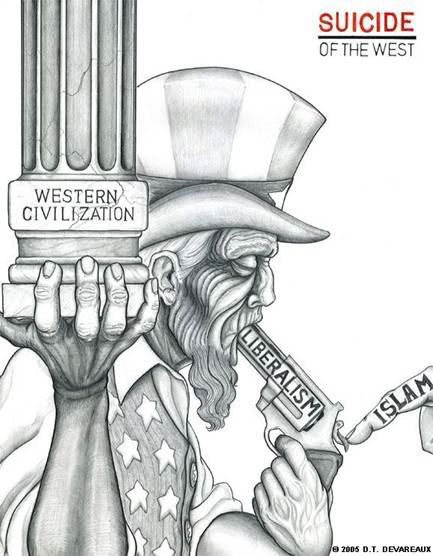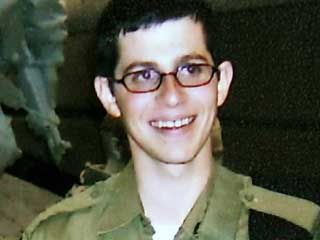 “Radicalization is something every human being that is older than fifteen knows. That they are a member of soccer teams, football teams, basketball teams, unions, fraternities, sororities. Everybody’s taught to get fired up. And that’s what radicalization is.”
“Radicalization is something every human being that is older than fifteen knows. That they are a member of soccer teams, football teams, basketball teams, unions, fraternities, sororities. Everybody’s taught to get fired up. And that’s what radicalization is.”
Yet, in practice, “radicalization makes little noise.”
Radicalization has been described as a funnel – in which many enter but only a select few exit – a ladder or step of stairs – in which each rung or step represents a different level of commitment – and even a house or a pyramid – where the majority live on the bottom floor and a small, core group lives exclusively at the top...
“Radicalization implies a transformation of the individual’s worldview over time from a range that society tends to consider to be normal into a range that society tends to consider extreme.”
Radicalization occurs on many different levels and for a plethora of reasons, but it is important to remember that “radicalization” is only a means to an end. Radicalism does not create violence; rather it serves as a facilitator for violet action. In the same way, for an individual undergoing radicalization, the “survival of the group [becomes] no longer a means to an end, but an end itself…”
It is the group and its dynamics that keeps a cell together and what can tear it apart. As group identity forms, the individual’s identity is subsumed by the greater whole through shared ideological commitment, peer pressure and the creation of “fictive kin,” until the actions and goals of the group are inseparable from that of the individual, much like in a cult atmosphere.
The personal social network of friends, family and neighbors, that define the group identity also become the definitive structure by which all decisions are made and executed. The constant threat of the enemy - the perception of “us versus them” - and the need to act are requisite to sustaining the group and managing both internal and external tensions.
The perception of “us versus them” also serves to foster stronger ties with the imagined Ummah or Muslim community, whose politicized Twenty-First Century construct has transcended any conferred religious legitimacy or meaning, and has greatly weakened the sense of national identity over a global identity.
The group is most important because loyalty and fidelity will always be directed at the individual and not at the idea, regardless of the strength of an ideology. This leads to “groupthink” and “illusions of invulnerability, excessive optimism, risk taking, and a presumption of morality” that creates a “one-dimensional ‘evil enemy’” for whom everyone in the group is wholeheartedly “intolerant” of…
Charismatic leadership takes on a pivotal role in the creation and operation of terror cell. Ideology only goes as far as motivation for the collective action of the cell; it provides a set of ideas and parameters or frames, for interpreting the collective goal. By framing the collective goals, a charismatic leader can provide the malleable recruit with the cognitive tools and language to help him or her in creating a social construct that resonates with the radical Islamist cause and mobilizes them to action.
“Radicals are not born, they are made.”
And those attracted to the radical Islamist ideology today tend to be young Muslim men, in their twenties and thirties, some are converts, other “reverts” or “born-again” Muslims, who are experiencing a crisis of identity and who perceive themselves to victims of the West, disenfranchised by their country of birth and alienated from the native culture of their parents.
These young men find groups of social networks to connect with; groups of likeminded people, who rally around a spiritual leader or simply a charismatic Muslim providing answers to their existential questions through the dialogue of their renewed faith.
Just as there is “no terrorist profile,” these young men being radicalized are as divided a group of men in any population. Some are middle class and educated, others are lower class dropouts; some have been successful in business, others deal drugs while aimlessly moving through menial jobs.
Today’s terrorist “challenge many of the stereotypes that were held about who becomes a terrorist and why… [they represent] a diverse collection of individuals, fitting no single demographic profile, nor do they all follow a typical pathway to violent extremism.”
Any individual can be led down the pathway towards radicalism as they encounter personal traumas such as racism, negative media stereotyping, blocked societal mobility, when the encounter the need to find a way to interpret their personal discontent or during the course of some type of religious misinterpretation in their lifetime’s early successes or failures. This “tipping point” or “catalyst” event creates a cognitive opening that can lead a seemingly normal young man into a hardened stealth Jihadist.
Still, no single factor can be considered “causal” in the radicalization process, a terrorist cell is a multi-faceted human construction that equally draws and requires, the “misfit,” “the money-maker” and the Mujadheen. Through radical ideology, extremists are creating a ‘Rejectionist Generation,’ whose grievances, whether real or perceived, are articulated by the global Islamist narrative.
Religion serves as a “tool of mobilization,” that allows for “a way of framing or representing a struggle in terms that a potential constituency will understand.” And, “because the religious worldview is totalizing one, issues of identity and ideology are often merged.”
The most important radicalizing influence today for Muslims worldwide is Iraq and Afghanistan; in April 2009 Ayman al-Zawihiri criticized the American President in a taped message stating that his decision to send more troops to the Middle East with add “more fuel to the fire.”
But these two conflicts are just the most recent in a long line of Jihadists causes that have rallied Muslims and non-Muslims alike across the world since the Afghan war against the Soviets in the 1980s that include, but is not limited to, Bosnia, Kashmir, Chechnya, Palestine, and Lebanon.
As a testament to this fact, many Western governments reported an increase in recruitment efforts following the 2003 invasion of Iraq by the U.S. and their allied forces.
 As Middle East scholar and author Fawaz Gerges stated in 2007, Iraq “has really poured fuel on a raging fire… I think we’re going to witness a new generation, which is more dangerous than al Qaeda, bloodier then al Qaeda, that uses terrorism as a rule rather then an exception.”
As Middle East scholar and author Fawaz Gerges stated in 2007, Iraq “has really poured fuel on a raging fire… I think we’re going to witness a new generation, which is more dangerous than al Qaeda, bloodier then al Qaeda, that uses terrorism as a rule rather then an exception.”
More then four hundred Americans, a number that continues to grow to this day, received training in Afghan or Pakistani Jihadist camps since 1989. And the young, battle tested Western Muslims returning from the conflict in Iraq (and more recently Somalia) represent a blowback as potentially dangerous as the Afghan Arabs were in inspiring European Muslims (and to a lesser extent those in the U.S.) to take up arms against the West in the years leading up to 9/11.
Experts estimate between one and two thousand Americans joined the Jihadist cause in the 1990s, many who were African American, and a small minority who were Latino
As journalist David Kaplan wrote:
"The jihad movement in America remains alive and well. And while it is easy enough
And despite the fact that crossing borders has become increasing difficult, the zeal of Western Jihadists to train abroad has not subsided and improvised facilities – including national parks, paintball and gun ranges – have provided (along with the growing role of interactive Internet sites), a modicum of support in and around the U.S. and Europe.
(The most recent examples of an attempt to train operatives within in the United States, includes the North Virginia and North Carolina cells, in addition to the the Oregon al Qaeda operative.)
The following was an excerpt from my 2009 piece entitled, Prislam: The Recruitment and Radicalization of Terrorist Operatives in the Prison System and the Threat to the American Homeland





















No comments:
Post a Comment